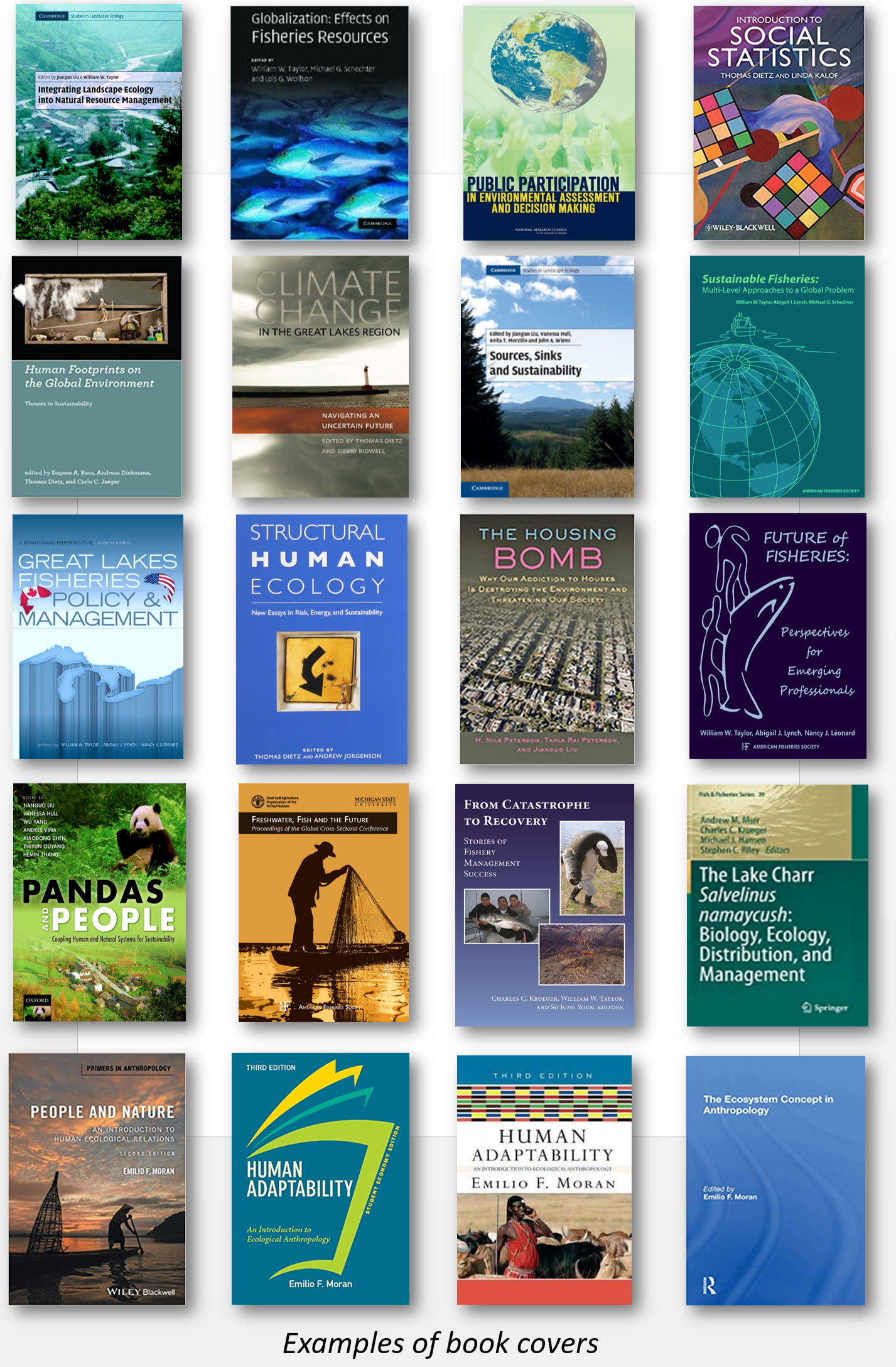Publications
Journal Articles
A list of journal articles published by CSIS members, including 3 cover stories in Nature, 24 appearances in Science, and 17 in PNAS (Proceedings of the National Academy of Sciences of the United States of America).
Books and Book Chapters
Selected books (edited books) and book chapters published by CSIS members.
Publications
-
ELEMENTA - SCIENCE OF THE ANTHROPOCENE -- Telecoupling framework for research on migratory species in the Anthropocene
Published on March 5, 2017
We apply the telecoupling framework to Kirtland’s warblers (Setophaga kirtlandii ), a conservation-reliant migratory songbird. -
Otolith chemistry indicates walleye movement and entrainment in a large serial reservoir system
Published on February 25, 2017
Otolith chemistry is useful for understanding walleye movement and is a tool for fisheries management with applications such as informing reservoir water releases, harvest regulations and habitat protection and rehabilitation.. -
JOURNAL OF INTEGRATIVE AGRICULTURE -- Telecoupled land-use changes in distant countries
Published on February 16, 2017
A study of the spatial attributes of soybean land changes within and among trading countries at the same time. -
Strengthening protected areas for biodiversity and ecosystem services in China
Published on February 1, 2017
We report a nationwide assessment for China, quantifying the provision of threatened species habitat and four key regulating services—water retention, soil retention, sandstorm prevention, and carbon sequestration—in nature reserves. -
A Review of Ecosystem Services Studies: Concept, Approach and Future Work in Korea
Published on January 26, 2017
We aimed to introduce the concept of Ecosystem Service (ES) and related terminologies such as Social-Ecological Systems (SESs), ecosystem function, trade-off, and human well-being in this paper. -
Values, opinions, and behavior of inland trout anglers in Michigan
Published on January 13, 2017
The Michigan DNR conducted the Inland Trout Angler Survey to assess current opinions of inland trout anglers with respect to regulations and management priorities, and to characterize behavior, opinions, and practices of a large sample of these anglers. -
Comparing stream-specific to generalized temperature models to guide coldwater salmonid management in a changing climate
Published on January 13, 2017
Using different projected climate change scenarios, we compared the accuracy and efficiency of stream-specific and generalized temperature models for coldwater salmonids within and outside Michigan, USA. -
Integration across a metacoupled world
Published on January 1, 2017
Human-nature interactions are complex and have important implications for achieving sustainable development goals and addressing other global challenges. Although numerous studies have explored human-nature (or human-environment) interactions and gen... -
SCIENCE CHINA - LIFE SCIENCES -- Conservation planning beyond giant pandas: the need for an innovative telecoupling framework
Published on December 27, 2016
A develop of innovative systems approaches that improve human well being while sustaining wildlife populations and their habitats. -
Acta Ecologica Sinica - 远程耦合世界的可持续性框架
Published on November 24, 2016
译自: Liu, J. et al. 2013. Framing sustainability in a telecoupled world. Ecology and Society 18(2): 26. -
ECOSYSTEM HEALTH AND SUSTAINABILITY -- New road for telecoupling global prosperity and ecological sustainability
Published on November 4, 2016
We apply the integrated framework of telecoupling and propose to enhance infrastructure connection, transboundary actions, scientific and cultural exchanges, and institutional innovations within the Belt and Road region. -
Developing future leaders
Published on October 23, 2016
We will discuss the importance of leadership development and action in the context of fisheries and aquatic ecosystem management and decision-making. -
Urban water sustainability: framework and application
Published on October 12, 2016
Urban areas such as megacities (those with populations greater than 10 million) are hotspots of global water use and thus face intense water management challenges -
Habitat Use and Selection by Giant Pandas
Published on September 30, 2016
Animals make choices about where to spend their time in complex and dynamic landscapes, choices that reveal information about their biology that in turn can be used to guide their conservation. -
On the evolution of organizations
Published on September 19, 2016
Like people, organizations—groups of people working together toward a common purpose—come in all varieties -
Chemistry to conservation: using otoliths to advance recreational and commercial fisheries management
Published on September 1, 2016
Otolith chemistry publications span a wide variety of topics (e.g., natal origins, habitat use, movement, stock discrimination, statistical theory) and species in freshwater and marine systems. -
In the footsteps of a heroine: honoring Janice Lee Fenske
Published on August 25, 2016
The Fenske Fellowship is a recruitment award offered through the Dept. of Fisheries and Wildlife at Michigan State University that provides financial support for students to integrate fisheries management experiences into their graduate research programs. -
Variation of soil hydraulic properties with alpine grassland degradation in the Eastern Tibetan Plateau
Published on August 8, 2016
In this study, soil field capacity (FC) and saturated hydraulic conductivity (Ks) together with several basic soil properties under light degraded (LD), moderate degraded (MD) and severe degraded (SD) alpine swamp meadow were investigated. -
To evolve, or not to evolve? - that is the question
Published on August 3, 2016
Formal and informal education, along with the presence of good mentors, is paramount in readying developing professionals for success in a changing environment and an evolving profession. -
The underappreciated livelihood contributions of inland fisheries and the societal consequences of their neglect
Published on July 14, 2016
This paper explores approaches that consider the knowledge and perspective of fishers, fish workers, other aquatic resource users, and their communities to augment and improve the knowledge in better managing freshwater fisheries resources.





 Print
Print Email
Email